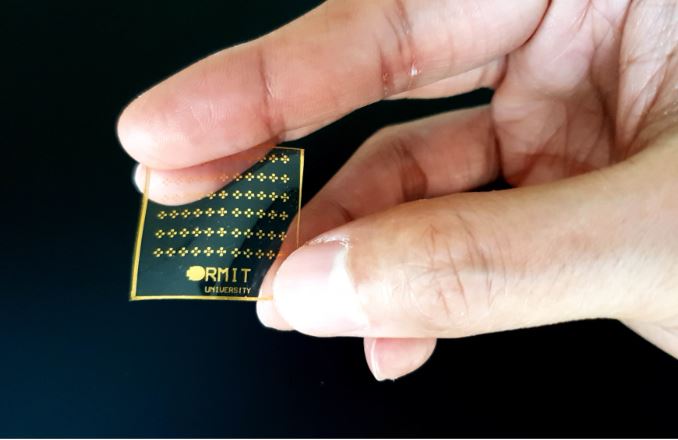The researchers have developed an artificial skin that is capable of feeling pain, heat and pressure like real skin, perfect for prosthetics or robotics
The evolution of robotics and prosthetics has accelerated rapidly in recent years. More and more advanced and accessible technologies allow today to imagine a not far future where artificial limbs will be completely similar to natural ones. Among the inventions that will contribute more to make this vision real is a new skin, invented in the laboratories of RMIT University in Melbourne. The invention has been presented on the pages of Advanced Intelligent Systems journal.
The new skin, with a patent pending, is the result of a combination of three previous technologies patented by the same research group. The prototypes produced by the researchers, led by Professor Madhu Bhaskaran, faithfully reproduce the characteristics of the most extensive organ of the human body. The skin is built with elastic electronic components that respond to changes in temperature and pressure. The variation of the electronic parameters is then transmitted to the body that interprets them as tactile sensations, feeling pain.

“We’ve essentially created the first electronic somatosensors replicating the key features of the body’s complex system of neurons, neural pathways and receptors that drive our perception of sensory stimuli” said PhD Ataur Rahman. “While some existing technologies have used electrical signals to mimic different levels of pain, these new devices can react to real mechanical pressure, temperature and pain, and deliver the right electronic response. “It means our artificial skin knows the difference between gently touching a pin with your finger or accidentally stabbing yourself with it, a critical distinction that has never been achieved before electronically”. The new skin is a big step forward in the development of advanced medical prosthetics, as well as soft robotics.
You may also be interested in -> 3D “printed” ankle: record-breaking intervention in Bologna